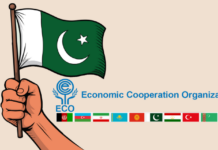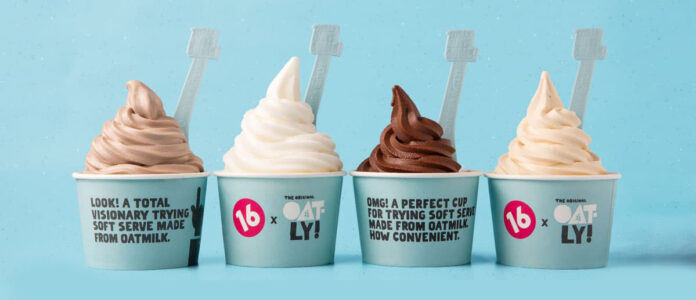In 2014, the frozen yoghurt business in Pakistan was melting away faster than a swirl left out in the sun. International chains like Tutti Frutti and Berrylicious, which had rushed the market with retail stores and marketing campaigns barely three years ago, were packing up.
Shuttered fro-yo outlets followed one after another in Lahore, Karachi, and Islamabad. What looked like a promising wave of international franchises targeting a health conscious clientele turned into a cautionary tale of overexpansion, a market that saturates far too quickly, and misplaced optimism.
Fro-yo’s first foray into Pakistan raised an important question: was Pakistan simply not ready for fro-yo, or was the execution not done right?
A decade later, that question remains open even as a number of new players try to tackle it. Frozen yoghurt has quietly returned to Pakistan’s food scene in the past couple of years. But will this second coming be any different?
The beginnings
The first fro-yo place to enter the retail market in Pakistan was Berrylicious. They started off in November 2011 as a minimalistic, grab-and-go set-up in Karachi’s Park Towers. Berrylicious was importing an unbranded fro-yo mix from California which proved to be quite popular. By the summer of 2012, they had opened up a flagship retail store on 26th Street in DHA Karachi.
That summer began the rise of fro-yo in Pakistan. A month after Berrylicious, the premium London based brand “Snog” launched two franchises in Karachi — one in Clifton and the other in Zamzama. In Punjab, the trend began with Tutti Frutti, a fro-yo brand from Los Angeles that set up their first branch at Bhera to attract customers stopping midway on the Lahore-Islamabad motorway. They quickly followed this up with multiple retail stores in Lahore, a franchise in Faisalabad and finally one in Karachi in May 2012.
The concept of fro-yo caught on quickly. In the initial days, not only was it a new kind of sweet treat but it also had added novelty. Customers would walk into retail stores with machines lined up and pump the fro-yo out themselves and get their toppings before having their cup weighed and paid. The craze for fro-yo was strong enough to get the attention of ice cream manufacturers in Pakistan. Unilever Pakistan launched a fro-yo variant under its Cornetto brand, called Cornetto Fruity-Yo and Igloo launched Igloo Fro Yo in March 2012 to be sold at retail stores.
Then the problems started. Frozen yoghurt was very much still a new product people were getting used to. The initial novelty of any new product always wears off. The question is always how well a business can sustain regular interest in the product. In the case of fro-yo, too many retail stores were popping up far too close to each other. On top of this, the retail stores were expensive to run. These were usually large shops the size of small cafes. Initially, the competing fro-yo brands tried to out-price each other but this did not last long. The costs of maintaining retail franchises were too high and the brands had to increase their prices. Very soon a situation developed where fro-yo was an expensive product with too many players and not enough customers. The excitement and optimism of the people entering the fro-yo business made it saturated very quickly.
Resurgence on the cards?
Frozen yogurt works best when it presents itself as an affordable indulgence. It costs less than a full café meal but still feels like a treat. In 2014, that positioning was weakened by poor branding and rapid overexpansion. Too many assumed international names would carry the concept. They overlooked the importance of the overall experience, how the space looks, how you feel while balancing a cup piled high with toppings.
As a result, by the end of 2014, the fro-yo market had been gutted in Pakistan. All that remained were a couple of retailers in Lahore and Islamabad running single machines out of their cafes. A branch of TuttiFruiti reappeared in Lahore for a couple years between 2016-18 until that disappeared too.
It has only been recently that fro-yo has made a bit of a comeback. And it seems they have learned lessons from the past.
Today, fro-yo chains are more careful. Locations are chosen with intent. Branding leans into lifestyle cues instead of only pushing the “healthier ice cream” idea. Rather than opening everywhere at once, operators concentrate on high-traffic areas where young people already gather. The model feels less like a gamble, more like patience.
A big driver for these new fro-yo places are Gen Z customers that have grown up watching trends travel instantly across borders. Think of it this way. Pizza Hut was founded in 1958 in Kansas. This would be the first international fast-food franchise to arrive in Pakistan in 1993. KFC would come in 1997 and McDonald’s would follow in 1998. Go back 30 years and trends were slow to travel across borders. It would take a cousin coming from abroad to tell you about the latest fad in American High Schools. But with the advent of the internet and global mass media consumption, trends travel much faster.
Bubble tea in Seoul, matcha lattes in New York, and Dubai Chocolate —these are all part of Gen Z’s visual vocabulary as soon as they become popular anywhere in the world. And Gen Z wants their local versions to feel just as polished. But what really sets this generation apart is that many of them are now in the workforce. They have jobs, disposable income, and a willingness to spend on experiences that feel global but are accessible at home.
For them, frozen yogurt is not just dessert. It is a small luxury they can afford regularly, a treat to enjoy after work or while hanging out with friends. The self-serve format fits their preference for personalization, but it is the ability to pay for it themselves that gives the product weight. In many ways, the fro-yo cup has become a symbol of Gen Z’s economic independence as much as their taste for novelty.
YoFroYo and the local comeback
Perhaps nothing shows this shift better than YoFroYo, a Karachi-born brand that has grown steadily since its launch. One of its owners, Nisha Zohaib, describes it as a family dream. “We loved froyo on every international trip and kept wishing Karachi had a place like that. We decided that if it didn’t exist, we would build it.”
What began with one swirl in Khayaban-e-Shahbaz in December 2023 soon expanded to Tipu Sultan in 2024 and, most recently, to Islamabad in 2025. Its success tells us how different the market looks now. Families, young professionals, and Gen Z students make up the core audience.
Much of YoFroYo’s edge lies in its relentless focus on quality and product development. Machines are cleaned daily, which is very important when it comes to maintaining the taste and quality of dairy products. The in-house R&D constantly experiments with new options, testing and tasting until only the best flavors make it to the menu. Currently, flavors are grouped into three categories—signature, seasonal specials, and limited edition, ensuring novelty without overwhelming choice.
The same discipline applies to toppings. From fresh fruits to bobas, gummies, wafers, and brownies, everything is checked daily by the quality control team. “If it’s not fresh, it doesn’t go on the bar. Simple,” Nisha says. This consistency has helped YoFroYo build a reputation in a category that once failed to inspire loyalty.
For Nisha, YoFroYo’s USP is not just what’s in the cup but the act of creating it. “YoFroYo is the pioneer of turning frozen yoghurt into an experience. It’s about the fun of making it yours.” The self-service model, with pumps for dispensing yogurt, gives customers the freedom to design their own cup . The outlets themselves are designed to be spacious, allowing customers to linger, socialize, and enjoy the atmosphere as much as the product.
YoFroYo has also become a hub for promoting young creatives, providing young talent a space to conduct workshops. “We want them to feel that dreams do come true, one step at a time. We’re arranging that first step for them,” Nisha adds.
And Karachi is not the only place where frozen yoghurt is making a comeback. A popular Lahore-based store called Baked, which also displays products from different cafes, cloud kitchens and home chefs in addition to their own products, has been stocking fro-yo for more than a year. With four retail stores in Lahore including a new massive flagship store in Gulberg, people have been lining up for their fro-yo as well. They keep two machines only at each store and change the flavours and toppings regularly to keep things fresh.
A stronger backdrop
Pakistan’s economy, though far from perfect, has matured enough to create room for these indulgences. Urban middle-class households now dedicate more of their budgets to eating out. Coffee chains, burger joints, bubble tea spots, and now fro-yo outlets benefit from this willingness to pay for “small luxuries.” The scale may be modest compared to regional neighbors, but the direction is clear.
This context matters. In 2014, the gap between aspiration and affordability was wide. Frozen yogurt felt expensive without feeling valuable. In 2025, it feels like a modest treat within reach, especially for young professionals and students who see food as part of their identity. Keep this in mind as well: frozen desserts are a pretty large market. According to a Euromonitor report from this year, the sales of frozen desserts in the last financial year was Rs 87 billion, up 26% from Rs 71.6 billion last year. According to the report, the share of frozen yoghurt in this is non-existent. Of course, the return of fro-yo has only just begun and cannot be compared to the ice cream giants that exist in Pakistan. However, the report does point out that there is a very clear demand for healthier alternatives to ice cream and frozen desserts.
‘The ice cream market in Pakistan is witnessing a growing demand for healthier alternatives. Sugar-free, low-fat, and high-protein ice creams are gaining popularity among consumers looking for guilt-free indulgence. Additionally, some local and premium brands are using natural sweeteners like stevia and honey instead of refined sugar to attract health-conscious buyers,” it reads. But could this alternative be fro-yo?
More than dairy and toppings
The comeback of frozen yogurt is less about dairy and more about timing, culture, economics and most importantly, execution.. Markets are not fixed. A product that fails in one decade can thrive in another, not because its recipe has changed, but because its consumers have.
In 2014, fro-yo fizzled out under the weight of poor strategy. In 2025, it has returned to a landscape shaped by Gen Z confidence, evolving consumer habits, and a sturdier economy. Whether this moment belongs to the frozen yogurt category as a whole or to standout players like YoFroYo remains to be seen.

























